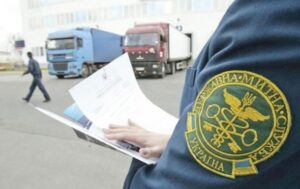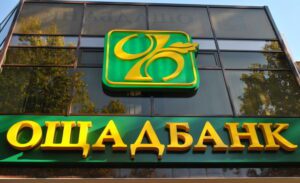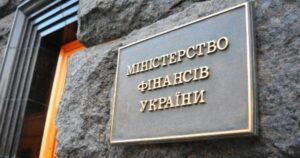
The Convention on the Joint Transit Procedure (CCTP) or the so-called “customs visa-free” for Ukraine came into force on Saturday: goods are already flowing into and out of the country under such a procedure, the Ministry of Finance reported.
“Today, October 1, Ukraine entered into force and business opened up the possibility of international movement of goods with 35 other participating countries under one transit document,” the press release says.
The Ministry of Finance clarified that the first country from which the cargo was sent for delivery to Ukraine under the joint transit procedure was Germany: Ukrainian customs officers already see the T1 transit declaration in the NCTS electronic transit system and are waiting for the truck to arrive.
In Ukraine, the first transit declaration for leaving the country was also issued: according to it, the cargo now follows through Poland to Germany.
Currently, the system is also awaiting the arrival of goods at the customs office of departure and other declarations, according to which the goods will be placed under the joint transit procedure and delivered to the customs offices of destination on the territory of the countries participating in the Convention, the report says.
The Ministry of Finance recalled that in accordance with the “customs visa-free” for the delivery of goods from one country to another, a single transit document is submitted: from the customs office of departure to the customs office of destination. This speeds up the passage of customs formalities at the border and reduces the associated costs for businesses. According to the forecast of the Directorate General for Taxation and Customs Union of the European Commission (DG TAXUD), Ukraine can enter the top ten countries in terms of the number of transit declarations.
“Customs is responsible for controlling the goods. We in the EU are striving to spend less time for control at the border, and more inside the country. In Ukraine, so far, most goods travel without checking inside the country – all control work takes place directly at the border. Therefore, queues form at the border. NCTS solves most of this problem: it is possible to submit a declaration to the system in advance, after checking inside the country, to put the necessary seals that are recognized in the EU. Then at the border, you only need time to read the barcode number, as it is done in a supermarket,” summed up the international expert of the Program for Public Financial Management in Ukraine (EU4PFM) Vytenis Alishauskas.
Ališauskas, CUSTOMS, customs visa-free, MINISTRY OF FINANCE, TRANSIT

The Ministry of Finance and the European Bank for Reconstruction and Development (EBRD) have discussed the possibility of providing a subordinated loan to Oschadbank with option to convert the loan into equity shares.
This was reported in a press release of the Ministry of Finance on Wednesday following the meeting of Finance Minister Serhiy Marchenko and Deputy Minister Oleksandr Kava with EBRD Managing Director, Eastern Europe and the Caucasus (EEC) Matteo Patrone.
“During the meeting, the issue of providing Oschadbank with EBRD long-term financing in the form of a subordinated loan with option to convert the loan into equity shares was raised. The parties continue to work actively to implement the sale of a stake in Oschadbank. The key issues remain the completion of the preparation procedures and the accession of Oschadbank to the households deposit guarantee system,” the ministry said.
The parties also discussed potential joint projects with the EBRD for 2022, namely the reconstruction of the Lower Dniester irrigation system.
Earlier, the Ministry of Agricultural Policy and Food announced the readiness of the EBRD to invest EUR 90 million for the reconstruction of the main water pumping station of the Lower Dniester irrigation system (Odesa region).
As reported, in March 2021, Ukrgasbank received a loan of EUR 30 million from IFC with option to convert the loan into equity shares. The next step for the privatization of the bank is to find a financial adviser for the bank.

The expenses of the Ministry of Finance of Ukraine under the “payments on value recovery instruments (VRI)” item in December 2021 amounted to UAH 4.635 billion, the State Treasury said in a report on the execution of the state budget on Friday.
According to the National Bank’s average official hryvnia-to-U.S. dollar exchange rate for December, this corresponds to about $170 million, which was probably used to buy out VRI on the market.
The Ministry of Finance did not comment on these December changes in the item of state budget expenditures to Interfax-Ukraine.
In total, over the past year, expenses under this item totaled UAH 5.633 billion, with an updated plan for the year of UAH 6.755 billion, while the original plan was UAH 1.155 billion.
Within its framework, in May, Ukraine, according to the Ministry of Finance, made the first payment on VRI issued as part of the restructuring of Ukraine’s public debt in 2015, which amounted to $40.751 million.
The May report of the State Treasury indicated the amount of expenses UAH 1.123 billion, but a month later it was reduced by 11%, to UAH 997.72 million, probably taking into account the partial buyout of about 11% of VRI by the Ministry of Finance in August 2020.
VRI were issued as part of the restructuring of Ukraine’s public debt in 2015 instead of eurobonds for a nominal amount of about $3.239 billion (20% of the restructuring volume) and are not part of the country’s public debt. Payments under VRI are made annually in cash in U.S. dollars, depending on the growth dynamics of Ukraine’s real GDP in 2019-2038, but after two calendar years, that is, between 2021 and 2040.
If GDP growth for the year is below 3% or real GDP is less than $125.4 billion, then there will be no payments on securities. If the growth of real GDP is from 3% to 4%, the payment on securities will be 15% the value of the GDP growth between 3-4%, and if it is higher than 4%, then 40% of the value of the GDP growth above 4% is paid. In addition, payments are capped at 1% of GDP from 2021 to 2025. The absence of any restrictions on payments after 2025 in the event of rapid GDP growth has been criticized by individual politicians and experts within the country.
Quotations of VRI in December fluctuated within 90.7% -95.3% of the nominal value – one of the lowest levels in the past year. At the same time, as a result of the escalation of the situation around Ukraine and the sale of Ukrainian assets caused by it, the value of VRI decreased in January 2022 and dropped to 66.7% of the nominal value this week. This is the lowest level since the beginning of the summer of 2019, not counting the short dip in value at the beginning of the COVID-19 pandemic. On Thursday, January 27, amid positive news, VRI rose by 9.4% to 73.5% of the nominal value.
Taking into account the quotes in December and the volume of expenditures made, it is possible to roughly estimate the volume of new purchases of VRI at about 5.7% of their total volume.
The growth of Ukraine’s GDP for 2021 is estimated by the National Bank of the country at 3%, which means no payments in 2023.